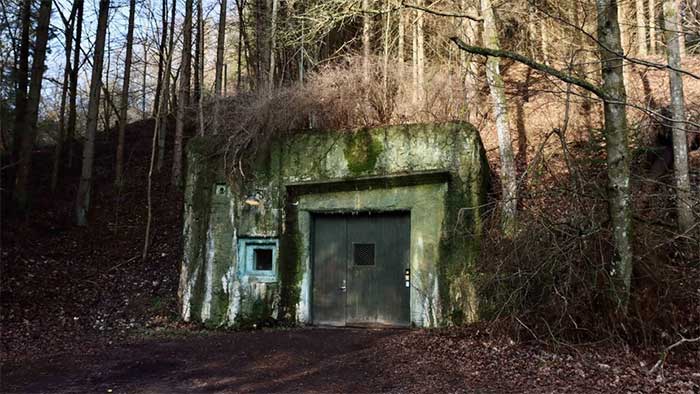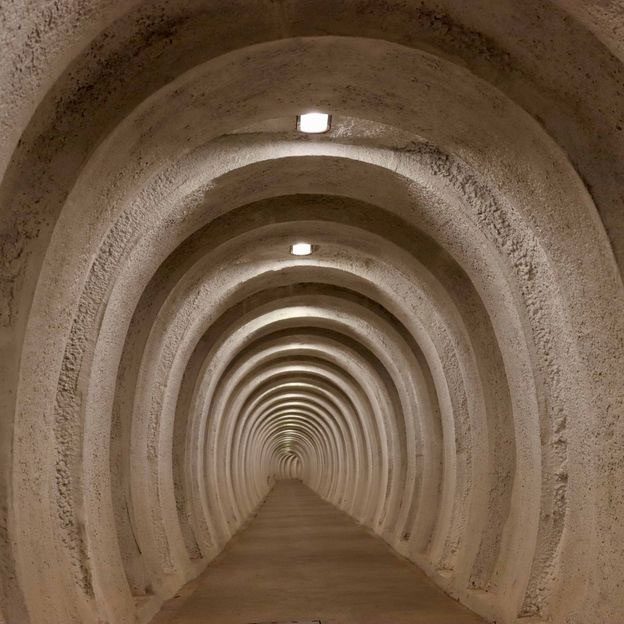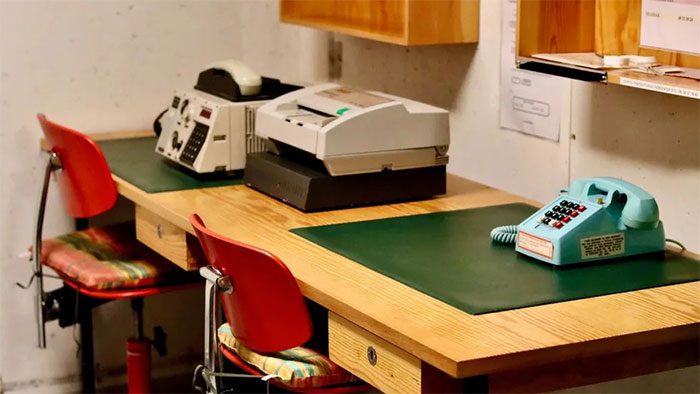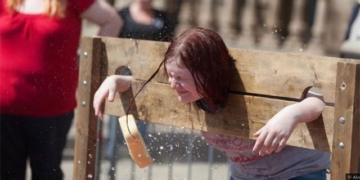A top-secret atomic bunker has opened its doors to the public in Denmark. Originally built to withstand nuclear bomb attacks, it has now transformed into an astonishing underground museum.
Hidden in the Rold Forest in northern Jutland, approximately 400 km northwest of Copenhagen, lies the vast REGAN Vest Shelter (REGAN West Cold War Museum).
Constructed in secrecy during the height of the Cold War in the 1960s, this bunker was intended as a refuge for the Danish government and even the queen in the event of a nuclear war.
The original plan was for Danish leaders to run the country from within this shelter, located 60 meters underground. Its existence remained a closely guarded secret for decades until it was revealed in 2012.
After years of preparation, it opened to the public for the first time in February 2023, now as a museum.
Only 50,000 visitors are allowed each year, with a small group limit of 10 people on 90-minute guided tours, exploring the 2km maze of bunker systems, according to BBC.

Weathered concrete doorway, now covered in moss. (Photo: Adrienne Murray Nielsen).
Secret Nuclear Shelter
Underneath the towering trees, reporter Adrienne Murray Nielsen walks along a short path leading to the bunker entrance – once guarded by police armed with pistols and grenades.
The weathered concrete doorway, now covered in moss, looks so ordinary that the vast network of tunnels it conceals becomes even more astonishing.
“This is part of maintaining secrecy,” said Bodil Frandsen, the museum curator who accompanied Nielsen.
As she enters the tunnel, Nielsen shares that she feels as if she is stepping into a parallel secret universe.
“Listen,” Lars Christian Nørbach, Director of the North Jutland Museum, says as the heavy door slams shut, echoing down the 300-meter long tunnel ahead.
The walk takes only a few minutes, but Nielsen feels it lasts much longer as they trace the winding walls designed to slow down the pressure wave from a nuclear explosion.

Curved walls designed to slow down the pressure wave from a nuclear explosion. (Photo: Adrienne Murray Nielsen).
Eventually, they reach the heavy, airtight door marking the entrance to the actual bunker.
The first stop is the engine room – where diesel generators would keep the bunker operational. Frandsen explains that once the door is sealed, blocking off the outside world, there would be enough electricity, recycled air, and supplies for 10 days.
She likens it to a submarine, but “on dry land.”
The Cold War was a period of political and military tension primarily between the former Soviet Union and Western powers, including the United States.
As a NATO member since 1949, Denmark’s strategic location at the entrance to the Baltic Sea made it significant. However, its proximity to the Iron Curtain also rendered it vulnerable, which is why Denmark prepared for the worst.
Construction of the REGAN Vest bunker began in 1963 and was completed five years later.
The nuclear shelter, measuring 5,500m2, is shaped like two large interconnected rings, each split into upper and lower levels, housing over 230 rooms that could accommodate around 350 people.
Most of these individuals would be ministers and officials – a lean part of the Danish government tasked with managing the nation during its darkest days – along with some medical staff, journalists, and a priest.
“Another World”
As they traverse a corridor, Nielsen is astonished to see intact offices, still equipped with telephones, vintage stationery, a communication room, and a small radio studio.
Much of the decor dates back to the 1960s and 1970s, including dozens of original classic chairs designed by the famous Danish designer Arne Jacobsen.
“Here feels like another world,” Nørbach remarks. “What’s special is that this bunker is unveiled, authentic. It’s like a time capsule.”
He explains that other government bunkers still exist, but they have been modernized or are not open to the public.
Fortunately, the nuclear threat never materialized, and REGAN Vest was only used for drills. It remained on standby until 2003.
Nine years later, the secrecy was lifted, leading to nearly a decade of preparations to preserve the bunker as a museum.

Vintage equipment left in the bunker office. (Photo: Adrienne Murray Nielsen).
As Nielsen enters the bunker’s “Situation Room,” military maps cover the walls, ready for meetings that never took place.
“If you look at the maps… you’ll see Denmark as a frontline country” at that time, Frandsen explains.
The Cold War was also a time of fear and paranoia, with a heightened spirit of preparedness. From basements in kindergartens to military fortresses, around 14,000 Cold War architectural structures were built across Denmark.
“I can’t say much more about it, as it’s still operational and kept secret,” Frandsen adds.
Along the circular corridor of the residential area in the bunker, the stairs are painted in shades of green, blue, yellow, and orange.
Nielsen notices a surreal life here. The simple rooms feature bunk beds and helmets.
“This is the VIP room. There’s carpet on the floor,” Nørbach announces as they enter a more spacious bedroom with two single beds, a private bathroom, and a small office.
These areas could have been reserved for Queen Margrethe. In fact, she visited once and even approved the wall paintings in her room, according to what Nielsen was told.
The underground journey concludes inside the self-service cafeteria – where identical black lamps hang low over the tables, and wallpaper in a forest theme adorns the walls.
After all, the fact that the bunker could remain hidden for half a century is the most remarkable aspect. Nielsen is curious about what the locals think of it.
“People are eager to go down and see what it is,” Frandsen replies.
“Many of them say, ‘I knew about it,’” Nørbach laughs. “But don’t believe them.”




















































